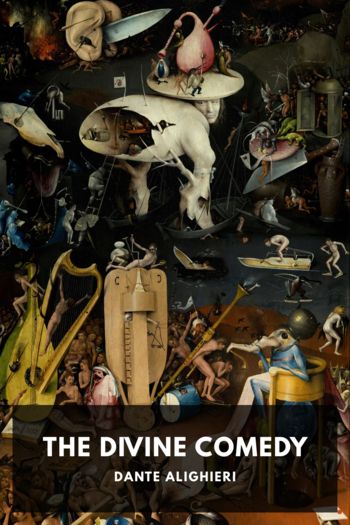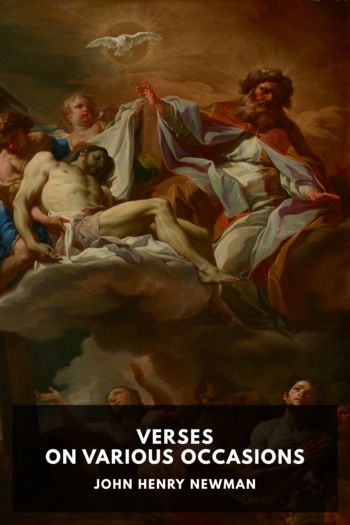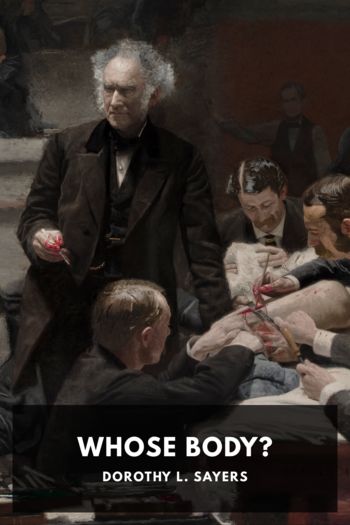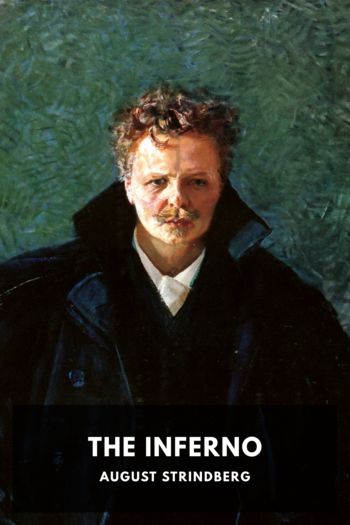The Divine Comedy, Dante Alighieri [best thriller novels of all time TXT] 📗

- Author: Dante Alighieri
Book online «The Divine Comedy, Dante Alighieri [best thriller novels of all time TXT] 📗». Author Dante Alighieri
Shakespeare, Troil. and Cres., III 3:—
“The present eye praises the present object:
Then marvel not, thou great and complete man,
That all the Greeks begin to worship Ajax;
Since things in motion sooner catch the eye
Than what not stirs. The cry went once on thee;
And still it might, and yet it may again,
If thou wouldst not entomb thyself alive,
And case thy reputation in thy tent.”
Cimabue died in 1300. His epitaph is:
“Credidit ut Cimabos picturae castra tenere,
Sic tenuit vivens, nunc tenet astra poli.”
Vasari, Lives of the Painters, I 93:—
“The gratitude which the masters in painting owe to Nature—who is ever the truest model of him who, possessing the power to select the brightest parts from her best and loveliest features, employs himself unweariedly in the reproduction of these beauties—this gratitude, I say, is due, in my judgment, to the Florentine painter Giotto, seeing that he alone—although born amidst incapable artists, and at a time when all good methods in art had long been entombed beneath the ruins of war—yet, by the favor of Heaven, he, I say, alone succeeded in resuscitating Art, and restoring her to a path that may be called the true one. And it was in truth a great marvel, that from so rude and inapt an age Giotto should have had strength to elicit so much, that the art of design, of which the men of those days had little, if any knowledge, was by his means effectually recalled into life. The birth of this great man took place in the hamlet of Vespignano, fourteen miles from the city of Florence, in the year 1276. His father’s name was Bondone, a simple husbandman, who reared the child, to whom he had given the name of Giotto, with such decency as his condition permitted. The boy was early remarked for extreme vivacity in all his childish proceedings, and for extraordinary promptitude of intelligence; so that he became endeared, not only to his father, but to all who knew him in the village and around it. When he was about ten years old, Bondone gave him a few sheep to watch, and with these he wandered about the vicinity—now here and now there. But, induced by Nature herself to the arts of design, he was perpetually drawing on the stones, the earth, or the sand, some natural object that came before him, or some fantasy that presented itself to his thoughts. It chanced one day that the affairs of Cimabue took him from Florence to Vespignano, when he perceived the young Giotto, who, while his sheep fed around him, was occupied in drawing one of them from the life, with a stone slightly pointed, upon a smooth, clean piece of rock—and that without any teaching whatever but such as Nature herself had imparted. Halting in astonishment, Cimabue inquired of the boy if he would accompany him to his home, and the child replied, he would go willingly, if his father were content to permit it. Cimabue therefore requesting the consent of Bondone, the latter granted it readily, and suffered the artist to conduct his son to Florence, where, in a short time, instructed by Cimabue and aided by Nature, the boy not only equalled his master in his own manner, but became so good an imitator of Nature that he totally banished the rude Greek manner, restoring art to the better path adhered to in modern times, and introducing the custom of accurately drawing living persons from nature, which had not been used for more than two hundred years. Or, if some had attempted it, as said above, it was not by any means with the success of Giotto. Among the portraits by this artist, and which still remain, is one of his contemporary and intimate friend, Dante Alighieri, who was no less famous as a poet than Giotto as a painter, and whom Messer Giovanni Boccaccio has lauded so highly in the introduction to his story of Messer Forese da Rabatta, and of Giotto the painter himself. This portrait is in the chapel of the palace of the Podestà in Florence; and in the same chapel are the portraits of Ser Brunetto Latini, master of Dante, and of Messer Corso Donati, an illustrious citizen of that day.”
Pope Benedict the Ninth, hearing of Giotto’s fame, sent one of his courtiers to Tuscany, to propose to him certain paintings for the Church of St. Peter.
“The messenger,” continues Vasari, “when on his way to visit Giotto, and to inquire what other good masters there were in Florence, spoke first with many artists in Siena—then, having received designs from them, he proceeded to Florence, and repaired one morning to the workshop where Giotto was occupied with his labors. He declared the purpose of the Pope, and the manner in which that Pontiff desired to avail himself of his assistance; and, finally, requested to have a drawing, that he might send it to his Holiness, Giotto, who was very courteous, took a sheet of paper and a pencil dipped in a red color, then, resting his elbow on his side, to form a sort of compass, with one turn of the hand he drew a circle, so perfect and exact that it was a marvel to behold. This done, he turned smiling to the courtier, saying, ‘Here is your drawing.’ ‘Am I to have nothing more than this?’ inquired the latter, conceiving himself to be jested with. ‘That is enough and to spare,’ returned Giotto; ‘send it with the rest, and you will see if it will be recognized.’ The messenger, unable to obtain anything more, went away very ill satisfied, and fearing that he had been fooled. Nevertheless, having despatched the other drawings to the Pope, with the names of those who had done them, he sent that of Giotto also, relating the mode in which he had made his circle, without moving his arm and without compasses; from which the Pope, and such of





Comments (0)